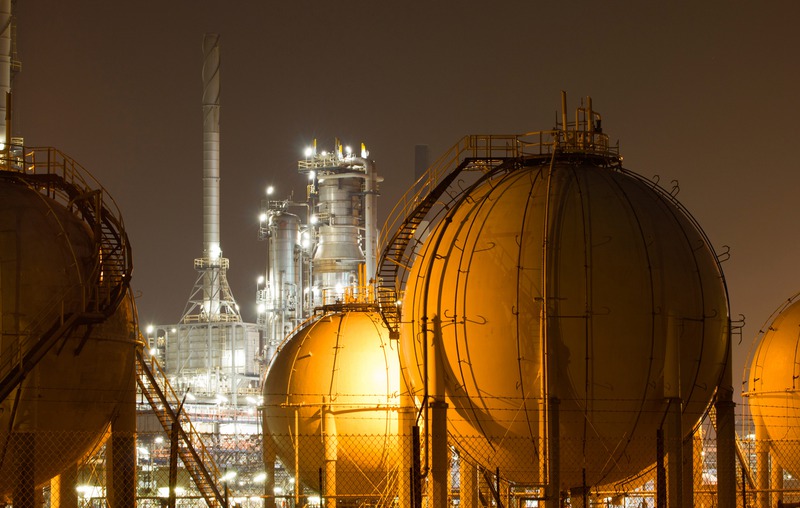
Natural gas is a vital energy source used around the globe, and its transport and storage play a significant role in energy markets. One of the critical aspects of its transportation is through liquefication, which allows for efficient storage and shipment. This article delves into the process behind liquifying natural gas, transforming it into a product that can be safely and economically transported over vast distances.
Natural Gas Liquefaction
Natural gas, primarily composed of methane, remains in a gaseous state at standard atmospheric temperature and pressure. To convert this gas into a liquid, a process called liquefaction is necessary. The process involves cooling the gas to approximately -162 degrees Celsius (-260 degrees Fahrenheit), which shrinks its volume by about 600 times.
This dramatic reduction in volume facilitates the storage and transportation of large quantities of natural gas in a liquid state, often referred to as LNG (liquefied natural gas).
Step-by-Step Liquification
The liquefaction of natural gas is a complex process that involves several critical steps:
Purification
Before cooling can occur, the raw natural gas must be purified. This stage removes water vapor, carbon dioxide, hydrogen sulfide, and other impurities that could freeze or corrode the equipment used in later stages.
Cooling and Condensation
The purified gas is then cooled through a series of heat exchangers. Using a refrigerant, typically a mixture of light hydrocarbons, the natural gas is subjected to a cooling cycle that brings it down to liquefaction temperatures.
Storage
Once liquefied, LNG is stored in specially designed insulated tanks to maintain its low temperature.
Transportation of LNG
LNG is typically transported using LNG carriers to reach its destination. These are double-hulled ships specially designed to handle the low temperatures of LNG. Upon arrival at a regasification terminal, LNG is returned to its gaseous state before being distributed through pipelines.
Similarly, industries that require quality foam blowing agents utilize products that demand high standards of production and purity, much like those established within the LNG production and supply chains.
Consistent Energy Supply
Having energy we can always count on is necessary. Our homes, factories, and even the phones we use need energy to work. Natural gas is a kind of energy that many places around the world use. Making sure that we have enough natural gas at all times is a challenge that experts work on. One way to make sure there is enough gas is by turning it into a liquid form, which helps us store and move it more easily.
Making Natural Gas Easy to Move
-
Liquefying Natural Gas for Transport: To make natural gas simple to move, we cool it down until it becomes a liquid. This cold liquid is known as liquefied natural gas or LNG. Once it’s a liquid, it takes up much less space than when it’s a gas, which means we can move a lot more of it in one go.
-
Benefits for Transportation: By turning natural gas into a liquid, very big ships and trucks can carry it to places that are far away. This is particularly useful for countries that need to bring in natural gas from other places. Moving LNG is believed to be safer and costs less money than moving natural gas as a gas through pipes.
Why We Store Natural Gas
-
Storage During Quiet Times: Sometimes, people and businesses do not need a lot of natural gas. During these times, it is good to keep it stored away. By having the gas in a liquid state, we can store a lot more of it. Then, when it gets cold and people need more heat, we can use this stored gas.
-
Preparing for More Demand: In winter or when a lot of people need gas at the same time, it is important to have enough. This is why storing LNG is helpful. It ensures that nobody runs out of gas when they most need it.
Keeping Supply and Demand Balanced
It can be tricky to always have the right amount of natural gas available. The weather or sudden events can change how much people use. By having the ability to store natural gas as LNG, we can make sure there is always enough. This means when more people need natural gas, we can quickly make LNG turn back into gas and send it to wherever it is needed.
Technological Innovations in LNG Processing
Advances in technology continue to enhance the LNG liquefaction process, making it more efficient and cost-effective. Innovations target minimizing energy consumption, reducing operating costs, and mitigating environmental impacts.
Economic Impact
LNG has a considerable economic impact on the energy market, providing a competitive alternative to other energy sources and influencing global gas prices. Countries that rely on imported energy can benefit from LNG as it offers a diversified fuel source, reducing dependence on a single type or supplier of energy.
Diversified CPC International is one such entity that provides resources that can be used within the broader scope of the LNG process, contributing to the complex chain of energy supply and demand.
Challenges in Liquifying Natural Gas
Though beneficial, the liquefaction process comes with its challenges, such as:
-
High initial capital costs for building facilities.
-
Geopolitical issues influencing trade routes and market accessibility.
-
Fluctuating market demands affecting infrastructure utilization.
Despite these challenges, the burgeoning demand for cleaner energy sources sustains the growth of the LNG industry. LNG’s application extends beyond energy production. For instance, semiconductor chip manufacturers rely on ultra-pure chemical products that could benefit from the cryogenic temperatures involved in the LNG process for certain manufacturing stages.
Final Thoughts
Liquifying natural gas is an intricate process that has become a cornerstone in the global energy landscape. From the intricate stages of purification to its final transport, the lifecycle of LNG showcases the effort and innovation invested in ensuring that this valuable resource reaches consumers in a usable form. While challenges remain, the benefits of a reliable, cleaner-burning fuel source like LNG continue to drive the industry forward, shaping the future of global energy consumption.






